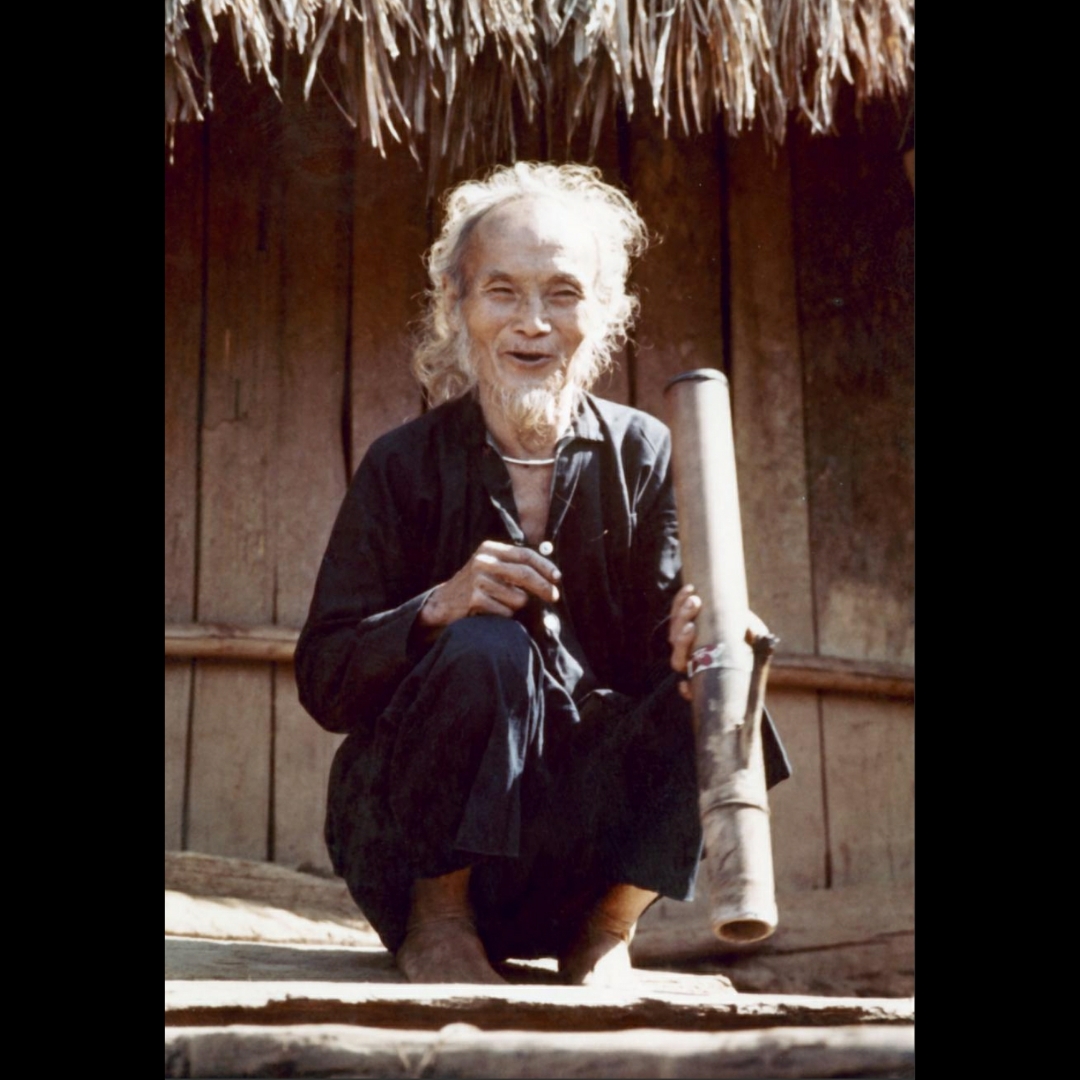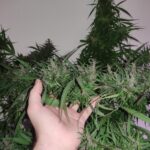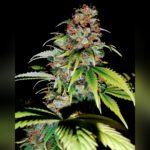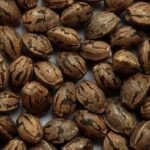Above is a 1973 shot of a Hmong oldster smoking a bong of tobacco. Below is a snap of seeds of a Hmong hemp landrace about to be germination tested after collection in Northeast Laos this week.
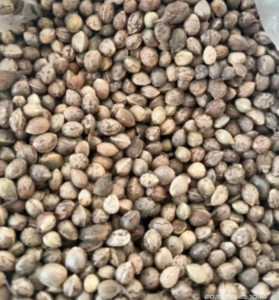
Seeds of a Hmong cannabis landrace just collected in Northeast Laos.
For some background on the Hmong and cannabis in Southeast Asia, the history of ethnic Hmong clans in northern Thailand and Laos begins with significant migrations south out of China in the 19th Century, driven by tensions with the Qing state over taxation, land rights, and corvée labour – i.e., levied unpaid forced labour.
In the highlands of C19 Laos, free from state interference, the Hmong established mountaintop villages and resumed their traditional way of life, one aspect of which is the cultivation of hemp for use in textiles.
Western cannabis aficionados often associate the Hmong with cultivation of ganja (sinsemilla or semi-sensi), but there is no established Hmong tradition of cultivating this crop, certainly not in their homeland in China and not in their villages in regions with a tradition of producing and consuming drug-type cannabis such as Thailand and Laos either.
Ganja (Lao: ຊາ / ‘sah’) is a distinct crop from hemp (Lao: ປ່ານ / ‘bahn’) and in contemporary Laos any hilltribe villages involved in ganja production – whether Hmong, Yao, Akha or another highland ethnicity – have at some point in the not-so-distant past been provided with seed and instruction in cultivation techniques by outsiders, usually enterprising Thais.
The strain name ‘Meo Thai’ is an example of how westerners can come away with painfully mistaken ideas after trips to Southeast Asia. ‘Meo’ or ‘Miao’ is an exonym applied to the Hmong people, mostly by Chinese and Tai peoples. Hmong communities in Laos and Thailand take this word as a racial slur akin to ‘thief’ or ‘bandit’.
The idea that there are Hmong strains of ganja can join the heap of other dubious Orientalist fantasies which pot aficionados have built up about about Asian ethnic minorities and cannabis, probably the most popular of which are images of wizened highlander oldsters smoking ‘cannabis’ in pipes….
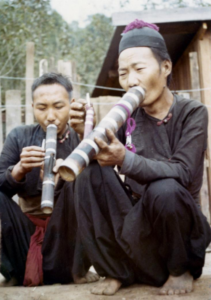
Two Blue Hmong (Hmong Njua) men smoking water pipes in front of a house in a village near Chiang Mai, Thailand. The pipes are used for smoking cigarettes and locally grown tobacco. William Sage, January 1970.
It’s not cannabis, folks. It’s tobacco…. And if it was anything more exciting in a Hmong village then the overwhelming likelihood is it would be opium, which would be getting smoked inside in a specialized opium pipe over a lamp, not in a bong and not out front of the home in the open air in plain view of a camera-toting westerner.
Based on my own experience of over two decades of visiting Hmong villages in Laos and Thailand – in the provinces of Mae Hong Son, Vientiane, Xiengkhouang, Bolikhamsai, and Luang Namtha – plus the research done by Rob Clarke, plus the evidence from China, it’s fair to say there really is no Hmong tradition of cultivating drug-type cannabis. Same goes for every other ‘hilltribe’ ethnicity in Laos.
Villages in Laos that do have a tradition with the ganja crop are those of lowland ethnicities such as the Lao and Phu Tai. By contrast, in the most recent chat I had with Hmong villagers in Bolikhamsai – a major centre of ganja production – the men told me they tried growing ganja a few times but found it to be a hassle and it didn’t work out.
So, to emphasize, the only drug crop the Hmong have any kind of history with is opium, and there’s very little of that in Hmong villages these days, particularly with the tension between Hmong communities and the Lao PDR government.
Speaking with ethnic Lao men around Bolikhamsai who do cultivate ganja – commercially or for themselves to smoke and use in dishes – I was told that Hmong *don’t have the technique* for ganja. A point missed by many aficionados is that raising a field of good ganja involves not just having the right seeds but good terroir and also the know-how (timing, spacing, roguing, feeding, and so on).
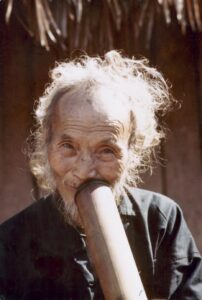
An elderly man smoking a cigarette with a bamboo water pipe in the White Hmong village of Nam Phet in Houa Khong Province, Laos. James Bowman, 1973.
Anyway, westerners on trips to Southeast Asia are likely to keep getting their facts in a twist on this one for a good while longer yet. Because everybody loves a wizened pipe-toking Oriental oldster photo…. still… right?
